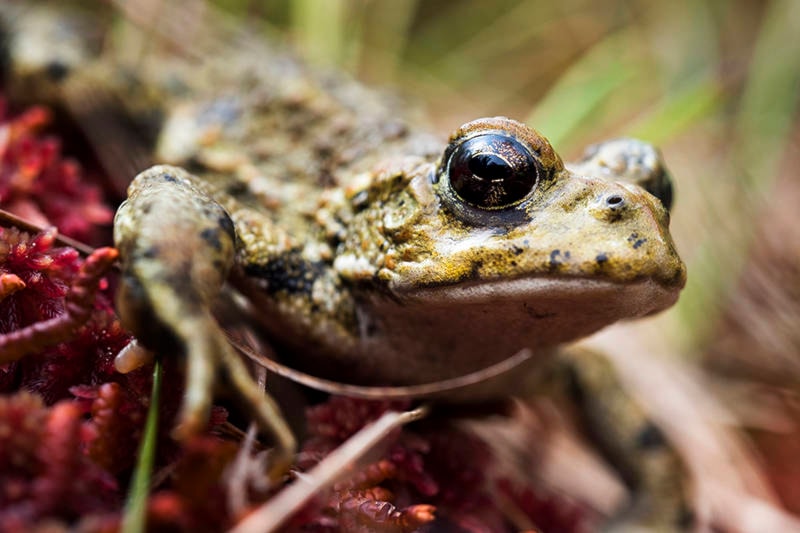By Victoria Leslie
As the storm season slows down, life begins to spring up and out of hiding in Gwaii Haanas.
Imagine looking out onto calm ocean waters and bright green landscapes as the sun rises and birds chirp. This is what I think about when I imagine how spring looks and feels in Gwaii Haanas.
Spring is here and the birds are shouting from the treetops and wave crests. One of these birds are ancient murrelets, a species at risk that are in Gwaii Haanas to burrow and breed from April to June. About half the world’s ancient murrelets nest on Haida Gwaii in the spring.
Each spring, my colleagues on the Gwaii Haanas resource conservation team set up audio recording units on designated islands to monitor ancient murrelet activity. Some islands have invasive species such as rats or raccoons that prey on birds by eating eggs, chicks or nesting birds. Islands with introduced rats or raccoons have almost zero ancient murrelet activity. Instead, these small black and white birds prefer smaller, far-flung places with fewer predators. Their easy-to-access burrows make them easy prey for marauding mammals, such as rats and raccoons.
These seabirds raise only two young each year. When the chicks are two days old, they have to embark on a long journey out in the ocean with their parents for food. This year I learned that whales and ancient murrelets enjoy the same food: small fish and krill that are abundant in our waters.
Another telltale sign of spring in Gwaii Haanas are landscapes are full of vibrant plants such as western bog laurel and lady slippers, along with new and old animals making an appearance. Fun fact: marten kits’ eyes are open this time of year after being alive for six weeks. Also, tadpoles of Haida Gwaii’s only native amphibian, the western toad, are hatching in our islands bogs and trying their best to hide from the introduced Pacific tree frog, which is a threat to their very existence.
Within the waters of Gwaii Haanas there is plenty of marine-life action linked to herring season. Each year, herring spawn in the spring on green kelp. Herring roe on kelp is k’aaw in Haida. The spawning turns the water a milky blue with spouts from snacking grey and humpback whales feasting as they refuel for their migration north.
Protecting the cultural resources of Gwaii Haanas is always important and springtime brings ideal weather for the Gwaii Haanas team to renew work at some of the 700 known archaeological sites. This delicate work ensures our globally renowned cultural sites are maintained for visitors and locals alike.
Springtime is my time to turn over a new leaf as I start my third season as a summer student at Gwaii Haanas. I’ve been studying psychology at the University of Victoria and I love coming back here to use my seeds of knowledge from school. Gwaii Haanas allows me to plant those seeds to strengthen and gain knowledge and experience. I was born and raised on Haida Gwaii and coming home to work at Gwaii Haanas is my favourite part of the year.
